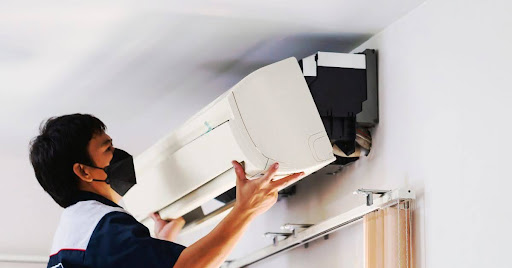Installing a new air conditioning (AC) system is a substantial investment that may increase comfort and energy efficiency in your house or office. However, proper installation is essential for system performance and longevity. This extensive tutorial will walk you through building an air conditioning system, from planning and preparation to testing and revisions.
Before installing, assess your cooling needs, budget, and space. Consider your home’s size, insulation, and ductwork. Before replacing an older system, check the ductwork and insulation to see if any repairs are needed.
Choose The Right Method
Find a size- and energy-efficient air conditioning system for your space. Consult ac system installation professionals to determine the best cooling capacity and system (central air, ductless mini-split, or window unit) for your needs.
Site selection involves finding the best outdoor unit (condenser) location that meets local building codes and provides for enough airflow. Allow enough space around the unit for maintenance and repairs.
Ductwork audit Check current ducting for leaks, damage, and insufficient insulation. Fix issues to improve airflow and reduce energy loss.
Before installing the refrigeration system, you must gather insulation, mounting brackets, electrical wire, and water lines.
Installation Process
After design and obtaining all necessary supplies, start installing the system.
It’s best to position the indoor unit’s evaporator on an inner wall away from heat and direct sunlight. Make sure the wall is supported and attached securely.
Outdoor Unit Positioning Place the outdoor unit, or condenser, on a level concrete pad or metal stand with enough ventilation room. Connect the condensate drain, electrical wiring, and refrigerant lines per manufacturer’s directions.
Installation or modification of ducting to distribute cooled air throughout the structure is advised. Seal joints and connections to prevent air loss and maximize energy efficiency.
Electrical wiring connects interior and outdoor units to the main electrical panel according to local safety and electrical codes. Electrical dangers can be avoided by testing connections and grounding.
Charge the air conditioning system with the manufacturer-recommended refrigerant. Manifold gauge sets are used to measure pressure and verify refrigerant flow.
Final Checks and Adjustments
After installation, the air conditioning system should be thoroughly checked to ensure proper operation.
Turning the system on and letting it go through its complete cycle starts it. Check temperature, airflow, and system operation for abnormalities.
To distribute air evenly throughout the structure, dampers and registers must be adjusted. All locations should have consistent cooling and any necessary changes.
Make that the thermostat is calibrated and the temperature readings are accurate. The system should maintain proper temperature settings without excessive cycling or temperature variations.
Checking System Efficiency Measure energy consumption and system effectiveness with energy monitoring tools or software. Find areas that need maintenance and take energy-efficient initiatives.
Conclusion
Air conditioning systems must be properly installed for maximum comfort, efficiency, and lifetime. Follow this step-by-step guide and choose qualified ac contractors technicians to ensure a seamless installation and reliable cooling for years to come. Thorough planning, preparation, and execution will boost building comfort and reduce energy use.





